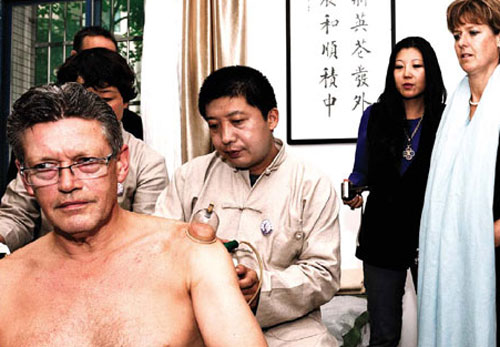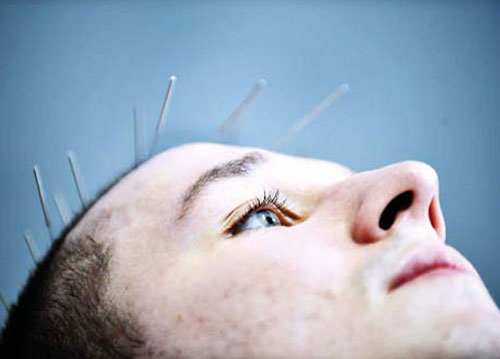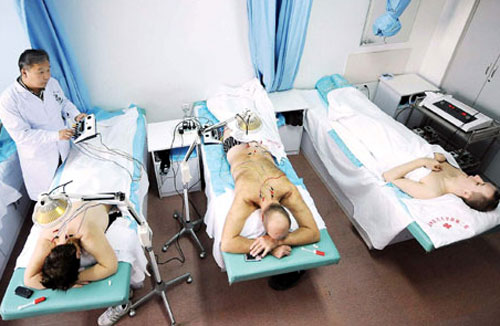Society
Medical tourism getting popular among the rich
Updated: 2011-06-04 09:45
By Shan Juan (China Daily)
Wang Ling, a 32-year-old housewife in Beijing, will soon set out on her special trip to Switzerland for sightseeing - and anti-aging sheep placenta therapy. The 10-day trip will cost her about 300,000 yuan ($46,300). "I got to know about such trips from my health consultant at Ciming Health Checkup Center, and I am quite happy with the idea of combining tourism with the famed beauty treatment," she said. As the Chinese get rich, many have moved from spree-buying luxury goods to paying more attention to their health, and they are willing to spend big on health preservation, according to Hu Bo, chairman of Ciming Health Checkup Management Group Co Ltd.
Wang, will be following the 200 or so clients of Ciming, a health examination chain with more than 30 outlets across the country, who traveled abroad for high-quality medical care last year. "The number has been constantly rising in recent years," Hu said.
His organization recommends such trips for clients and helps handle procedures such as visa applications and booking services at the destination. Some clients travel on their own initiative and some receive the trips as gifts, Hu said.
Destinations popular with the Chinese, besides Switzerland, include South Korea for cosmetic surgery, Hong Kong and the United States for childbirth, and Germany for general health checkups, with special attention to cancer.
A seven- to 10-day stay generally costs 300,000 to 500,000 yuan ($46,269 to $77,115), including first-class airfare, accommodations and health services.
"Actually, such health services especially the health preservation therapies, can also be obtained within the country and probably at a much lower price," said Xu Shuo, secretary-general of the Beijing Medical Doctor Association. "But the rich still would like to pay heavily, seeking better services abroad, largely at hot tourism destinations."
Some patients also travel to other countries for cutting-edge and high-quality medical services such as cancer treatment and some operations that domestic hospitals cannot provide, he said.
For example, in 2008 China's top hurdler, Liu Xiang, went to the US for an operation on his Achilles tendon, although Xu said such surgery is widely available in China.
"Our technology and clinical practice about that are up to international standards," Xu said, "but matching services and capacity like post-operative recovery and follow-ups lag far behind."
Besides, Hu said, foreign healthcare providers are better at promoting their programs among the target customers in China.
Switzerland, for example, has successfully branded itself as the top provider of the trademark anti-aging therapy using sheep placentas. It lures tens of thousands of customers from abroad, although Hu said few Swiss would go for the therapy.
Despite the increasing number of Chinese choosing medical tourism, the business is still a fledgling with considerable untapped market potential, Hu said.
Renee Marie Stephano, president of the US-based Medical Tourism Association, expressed confidence in the Chinese market. The country's surging economy has produced a sharp increase in the number of ultra-wealthy residents and they are all potential customers, she said.
According to the annual Asia-Pacific Wealth Report by Merrill Lynch and Capgemini, China now has 6,000 super-rich citizens - those with at least $30 million in investable assets. Japan has 5,300.
A recent survey by Rupert Hoogewerf, who ranks China's rich each year, showed that of all their expenditures, traveling took up the lion's share. Previously, the rich spent more on buying luxuries.
Given that China's medical services are among the most affordable in the world, Stephano said, only the rich go out of the country for quality services at high price.
Internationally, about 6 million people - largely from the United States, Japan, Europe and the Middle East - went abroad last year seeking medical services, mostly for a lower price or shorter waiting period, experts estimated. About 1.2 million of them chose Thailand and 450,000 India.
The cost of surgery in India, Thailand or South Africa can be one-tenth the cost in the US or Western Europe, sometimes less, according to an article in UDaily, a University of Delaware publication.
A heart-valve replacement that would cost $200,000 or more in the US, for example, goes for $10,000 in India - and that includes round-trip airfare and a brief vacation package, the article said. A metal-free dental bridge worth $5,500 in the US costs $500 in India, a knee replacement in Thailand with six days of physical therapy costs about one-fifth of what it would in the States, and Lasik eye surgery worth $3,700 in the US is available in many other countries for $730.
Cosmetic surgery savings are even greater: A full face-lift that would cost $20,000 in the US runs about $1,250 in South Africa, it said.
A forecast by Deloitte Consulting, published in August 2008, projected that medical tourism originating from the US could jump tenfold over the next decade. An estimated 750,000 Americans went abroad for health care in 2007, and the number reached roughly 1.5 million in 2010.
Convenience and speed also attract medical tourists, Stephano said. The increasing ease and affordability of international travel, along with improvements in technology and standards of care in many countries, also help the business.
Countries that operate public healthcare systems are often so taxed that patients must wait a considerable time for non-urgent medical care. In Canada, for example, 782,936 Canadians spent time on medical waiting lists - waiting an average of 9.4 weeks - in 2005, the most recent data available.
Specials

Birthday a new 'starting point'
China's national English language newspaper aims for a top-notch international all-media group.

Room at the inn
The Chinese hotel industry experiences a building boom, prompting fears of oversupply.

Pearls of wisdom
Chinese pearl farmers dominate the world market but now want to work smarter, not harder


